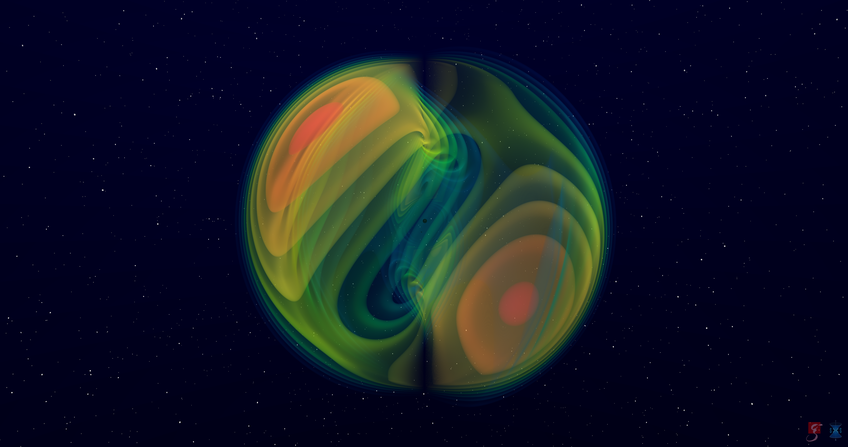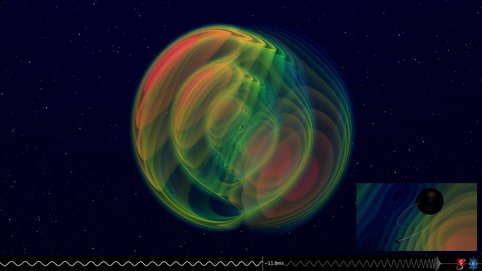
Numerical simulation of a black-hole binary merger with asymmetric masses and orbital precession (GW190412)
Numerical simulation of two black holes that inspiral and merge, emitting gravitational waves. One black hole is 3.5x more massive than the other and spins, which makes the orbit precess. The simulated gravitational wave signal is consistent with the observation made by the LIGO and Virgo gravitational wave detectors on April 12th, 2019 (GW190412).
Details on the visualization
- The „apparent horizon“ of the black holes in the simulation are shown in black. At 1:09 the simulation finds an enveloping apparent horizon that signals the two black holes have merged.
- The coloring on the horizons represents their deformation. Specifically, it shows the two-dimensional Ricci scalar on the surface. White arrows indicate the direction of the black hole’s spin.
- The gravitational radiation is translated to colors around the black holes. The colors transition from blue, representing weak radiation, to red, representing strong radiation. Specifically, the coloring represents the real part of the gravitational wave strain with its inverse radial scaling removed for visualization. The strain is computed from the simulation’s extrapolated waveform, which is shown at the bottom of the screen.
Credits
© N. Fischer, H. Pfeiffer, A. Buonanno (Max Planck Institute for Gravitational Physics), Simulating eXtreme Spacetimes project
Note: Publication of these images and movies requires proper credits and written permission. Please contact the AEI press office in advance of publication or for higher-resolution versions.
Movie
GW190412: Binary Black Hole Merger
GW190412: Binary Black Hole Merger
Still images from these simulations after the page break!













